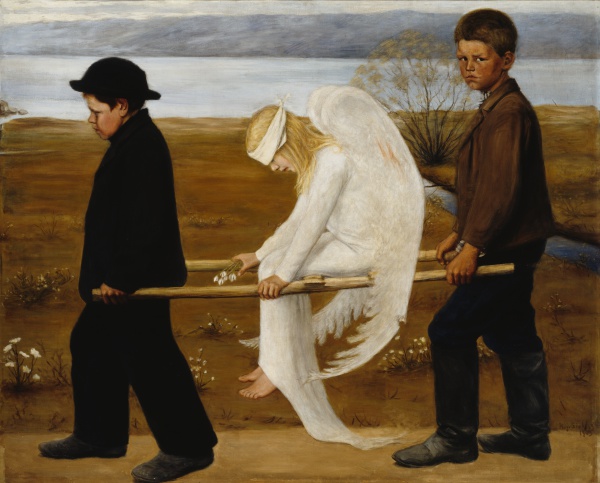Facts About The Wounded Angel
"The Wounded Angel" by Hugo Simberg is a beloved painting in Finnish art and is often celebrated as one of his masterpieces. In 2006, it was even voted Finland's "national painting" by the Ateneum Art Museum. The artwork depicts a poignant scene: an angel with a bandaged forehead and a bloodied wing, being carried by two somber boys. One of the boys meets the viewer's gaze, adding emotional depth to the scene.
The backdrop of the painting is Eläintarha in Helsinki, with Töölönlahti Bay visible in the distance. During Simberg's time, this park was a bustling spot for the working class and hosted various charitable institutions. The wounded angel is being escorted by the healthy boys toward the Blind Girls’ School and the Home for Cripples. She holds snowdrops, symbolizing healing and new beginnings.
Simberg, who had battled meningitis, found comfort and strength in creating this painting during his recovery. The artwork reflects aspects of his illness, such as neck stiffness and fatigue, evident in the angel's posture. Some art enthusiasts believe the angel's minor injury might symbolize the impact of tubercular meningitis on the lungs.
When "The Wounded Angel" was first exhibited in 1903, it received high praise from Finnish artists. Simberg's peers and the exhibition jury admired its unique qualities and emotional resonance. The painting held such significance for Simberg that when he was commissioned to create frescoes for the Tampere Cathedral in 1905-06, he included a larger version of "The Wounded Angel" underscoring its importance as his favorite work.

 Sweden
Sweden